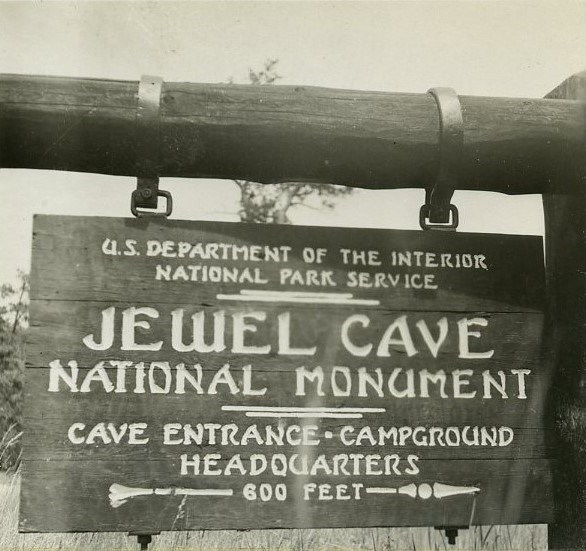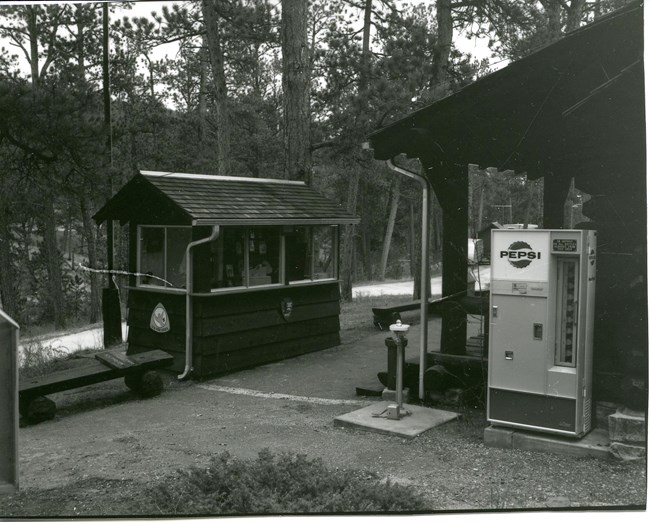
NPS Photo In 1928, a group of five businessmen from Custer, SD, Osage, WY, and Newcastle, WY, formed the Jewel Cave Corporation (JCC). The JCC raised money and paid the Michaud family $750 in 1928 to give their mining claim back to the government. The JCC then continued to operate cave tours and manage Jewel Cave. When created, the monument was initially under the administration of the U.S. Forest Service until an executive order transferred the management of several National Monuments to the National Park Service in 1933. The JCC continued to work jointly with the NPS through 1939 when the JCC dissolved and Wind Cave National Park rangers began leading the cave tours the next summer. 
NPS Photo In 1940, park rangers were stationed at the monument in the summer and began conducting cave tours and providing visitor services. The cabin was used as the Visitor Center as well as a residence for rangers. It became home to the monument’s first permanent ranger, Elwood Wolfe and his wife Shirley in 1941. The Wolfes stayed at the Jewel Cave cabin in the summer and stayed at Wind Cave in the winter, checking on Jewel Cave periodically. Except for a brief period of closure during World War II, NPS rangers staffed the cabin and cave tour operation. Then, in the late 1950s, significant discoveries were made within the cave, which lead to the development of a new visitor center and cave tour route. The cabin was continuously updated to accommodate increased visitation until the current Visitor Center, Scenic Tour, and Discovery Tour opened in 1972. After the new Visitor Center was built, the original cabin built in 1935 by the CCC was no longer needed and was restored in 2000 to how it looked in 1935. |
Last updated: November 21, 2025
